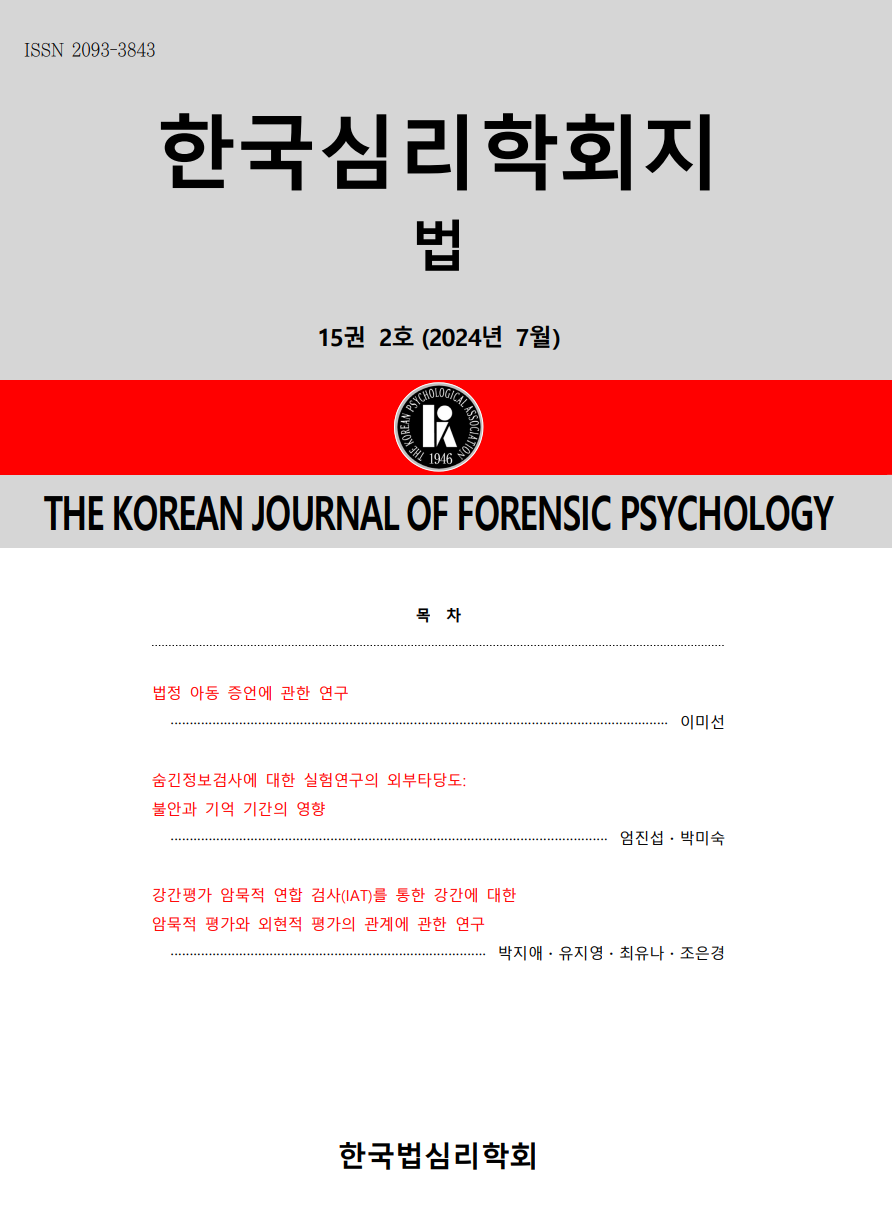open access
메뉴
open access
메뉴 ISSN : 2093-3843
ISSN : 2093-3843
This study examined the effects of acute stress on depression and anxiety in 110 crime victims, and verified the moderating effects of emotion dysregulation and social support by gender. The results of the study are as follows. First, there was no difference in the level of acute stress, depression, anxiety, and emotion dysregulation depending on the type of crime. However, in case of victims who have experienced crimes more than three times, their depression and anxiety level was higher than those who experienced crimes less than twice. Second, acute stress, emotion dysregulation,, and social support due to crime damage did not show any significant sex difference. However, women showed significantly higher levels of depression and anxiety than men. Third, in the case of male victims, emotion dysregulation showed a significant moderating effect in the relationship between acute stress and depression/anxiety, but the female victims had no such effect. Fourth, social support for both male and female victims did not moderate the relationship between acute stress and depression/anxiety. The results of this study suggest that the negative emotions experienced by the crime victims during the acute stress stage due to crime damage require different therapeutic interventions depending on their gender. Finally, the significances and limitations of the study are discussed.
This study was conducted to validate whether a two-factor model which consist of the internalized and externalized measures of PAI represents similar model fitness in a study of Korean adult prisoners. Based on previous studies by Ruiz and others (2008), we explored the internal structure of PAI scales conducted on prisoners(N=788) in korean prisons, and found that there were 11 clinical scales, and 13 scales of suicide concepts (SUI) and aggressiveness (AGG) scales, which are important signs of internalizing and externalizing. PAI was conducted on the prisoners from individual prisons in five regions of Korea. As a result, the Cronbach's Alphas of the PAI full scale and subscale were generally superior. The correlations of the thirteen scales showed a high correlation between the subscales belonging to the internalizing factor and the subscales belonging to the externalizing factor. In the exploratory factor analysis, the distinction between the internalizing and externalizing factors of Korean adult prison prisoners was slightly different from the sub-constitutional scale of the PAI two-factor model of Ruiz and others (2008). Two notable features are the delusions (PAR) scale and the drug problem (DRG) scale, which were classified as externalizing scales in previous studies, classified as the internalizing scales in this study. In the results of the confirmation factor analysis, the conformity of the two factor model appears to be acceptable, and it appears to be the model that can be used in the domestic correction setting. Therefore, this study has explored the PAI internalizing and externalizing scales of adult prison prisoners who reflect the cultural characteristics of Korea, which differ from those of the West, and discussed effective interventions based on these two-factor model in the management and treatment of prisoners.
Although the severity of dating violence increases, research on dating violence remains scarce and most studies on dating violence focus on reporting demographics of dating violence. Perception of crime influences offender punishment and sentencing, as well as law making, therefore investigating perception of crime provide practical implications. The present study investigated perception of dating violence, including its severity and frequencies, and how gender and ambivalent sexism affects perception of dating violence. We gave a total of 203 participants scenarios regarding four types of dating violence(control behavior, emotional violence, physical violence, and sexual violence), and evaluated perception of severity and frequencies of dating violence. We conducted independent samples t-test, correlational analyses, and regression analyses to examine how gender and ambivalent sexism affected perception of dating violence. As a result, respondents perceived dating violence as considerably severe, and the difference by gender was found only in the severity of sexual violence against male victims. Male respondents evaluated sexual violence against male victims less severe than female respondents. Perception of frequencies of dating violence differed by gender of respondents: Male respondents perceived dating violence less frequent than female respondents did. Males displayed higher hostile and benevolent sexism attitudes than females. Furthermore, competitive gender differentiation, a sub-factor of hostile sexism, affected perception of frequencies of control behavior, physical violence, and sexual violence, and gender was highly related to perception of frequencies of emotional violence and sexual violence. Finally, we discussed practical applications and limitations of the study, and made suggestions for future research.